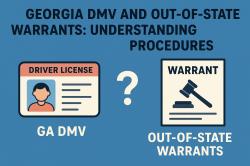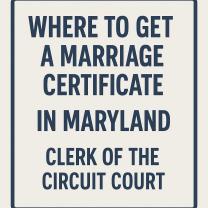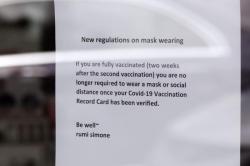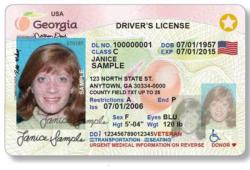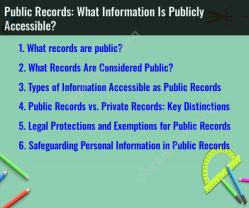How to see court records?
Accessing court records can vary depending on the jurisdiction and type of court. Generally, court records are considered public records, but the process for accessing them may differ from one location to another. Here is a general step-by-step guide on how to access court records:
Step 1: Identify the Jurisdiction:
- Determine which court system and jurisdiction hold the records you need. Court records are typically organized by county or district, so you'll need to know where the case was filed.
Step 2: Determine the Type of Court Record:
- Identify the specific type of court record you're looking for, such as civil, criminal, family, or probate. Each type of record may be stored separately.
Step 3: Visit the Court Website:
- Most courts have websites that provide information on accessing records. Visit the official website of the relevant court or jurisdiction for guidance.
Step 4: Check Online Databases:
- Many courts offer online databases where you can search for and access court records. These databases are often free to use. You may need to provide case details like the case number or the names of the parties involved.
Step 5: Contact the Clerk of Court:
- If you can't find the records online or need assistance, contact the clerk of the court in person, by phone, or through the court's website. The clerk's office is responsible for maintaining court records.
Step 6: Request the Records:
- If the records are not available online, you may need to request them in person or in writing. Be prepared to provide specific information about the case, such as the case number, parties' names, and the date of the case.
Step 7: Pay Any Required Fees:
- Some courts may charge fees for copying or accessing records. Be prepared to pay any applicable fees. The court clerk can provide information on the cost and payment methods.
Step 8: Review the Records:
- Once you have access to the records, review them carefully. Court records can include a wide range of documents, such as pleadings, judgments, transcripts, and more.
Step 9: Respect Privacy and Redactions:
- Keep in mind that certain personal information, such as Social Security numbers and home addresses, may be redacted or protected by privacy laws. Be respectful of individuals' privacy when using court records.
Step 10: Request Certified Copies (If Needed):- If you require certified copies of court records for legal purposes, such as for court proceedings, you may need to make a specific request and pay additional fees.
Step 11: Follow Up and Verify:- Double-check the accuracy of the records you obtain, especially if they are for official or legal purposes.
It's essential to note that the process for accessing court records can vary widely depending on local laws and regulations. Additionally, certain sensitive or sealed records may have restricted access. Always check with the specific court or jurisdiction for the most accurate and up-to-date information on accessing court records.




